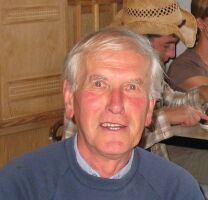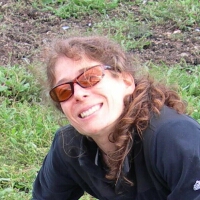The
Hudson Bay Project Team
Principal
Investigators - still slogging in the tundra
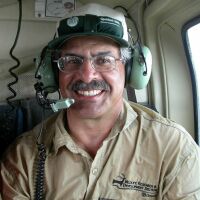 |
Kenneth
Abraham
is a wildlife biologist and conservation manager working
primarily
in arctic coastal ecosystems and the Hudson Bay Lowlands.
He continues to study brant, Canada
and lesser snow goose populations as well as goose-plant interactions
extensively
within
this region. He also studies the ecology of a
variety of
shorebirds and sea duck species. He is very interested in developing
methods for the rapid assessment of habitat damage. He is an Emeritus
Research
Scientist in the Wildlife Research and Development Section, Ontario
Ministry of
Natural Resources, and an Adjunct Professor at Trent University. |
| |
|
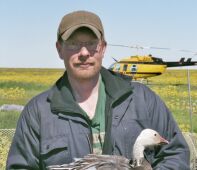 |
Rod
Brook is a
wildlife biologist examining the population dynamics and
in community ecology
of arctic breeding geese and ducks throughout the
Northwest Territories, Nunavut and the Hudson Bay Lowlands. He is
especially interested in developing fixed-wing based photographic
systems to assess degradation and recovery of coastal tundra and boreal
ecosystems. He is a Research Scientist in the
Wildlife
Research and
Development Section, Ontario Ministry of Natural Resources. |
| |
|
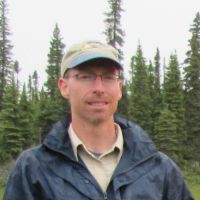
|
Glen Brown
is an ecologist with research interests linking ecosystem processes,
population dynamics, and individual behavioural strategies, with a
current focus on wildlife inhabiting coastal ecosystems and the Hudson
Bay Lowlands. His research is intended to inform conservation and
management by addressing uncertainties in the effects of environmental
heterogeneity and human perturbations on wildlife populations. Of
recent interest is the effect of climate change on permafrost wetlands
used as habitat for migratory water birds and other vertebrates,
including arctic fox, and the resulting effects on species interactions
and community dynamics. He is a Research Scientist with the Ontario
Ministry of Natural Resources and Forestry and an Adjunct Professor at
Trent University.
|
|
|
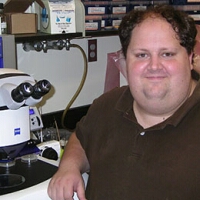 |
Brian Darby
is a soil ecologist interested in nematodes and other
microinvertebrates in an ecological genomics framework. He uses
molecular and sequencing tools to characterize soil microbial and
microfaunal communities, identify genetic loci of adaptive
significance, and understand how genetic differences between organisms
affect their roles in ecosystem functioning. He also uses molecular
tools to answer basic questions of wildlife ecology and natural history
or to facilitate non-invasive monitoring of wildlife. He leads our
polar bear genetics team. He is an Associate Professor at the
University of North Dakota. |
|
|
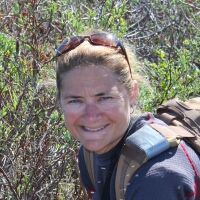
|
Susan
Ellis-Felege
is a wildlife ecologist with broad interests in behavior, species’
interactions and community dynamics. Her research uses state
of
the art tools for data acquisition including remote camera traps and
videography as well as unmanned aviation vehicles (UAV’s) with multiple
sensors. She has developed citizen science based programs to extract
data from the images obtained and uses quantitative and spatial (GIS)
tools to analyze the data. She is an Associate Professor at
the
University of North Dakota. |
|
|
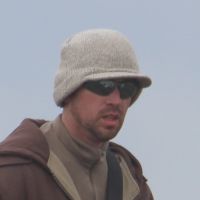
|
Chris Felege is a biological
education specialist with interests in high impact practices such as
undergraduate research, teaching and problem-based learning. His
research evaluates long-term outcomes for students from such
experiences. Chris is a member of our UAV flight team and given
his training in science education, he will be heading up our community
outreach program that will involve local students in our work.
Chris is an instructor in the Biology Department at the University of
North Dakota. |
|
|
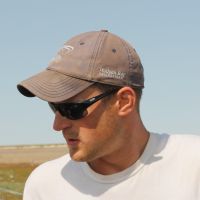
|
David Iles
is a population ecologist broadly interested in the effects of global
change (including species invasions, climate change, and land-use
conversion). Towards this goal, he has worked on a variety of systems,
including vertebrates (sea ducks, geese, polar bears, and penguins),
invertebrates (bumble bees), and plants. His research spans three
interconnected areas of inquiry: 1) comparative demography and life
history theory, 2) demographic (process-based) approaches to
understanding population patterns, and 3) population projection and
forecasting. He is currently a postdoctoral investigator at the Woods
Hole Oceanographic Institution.
|
|
|
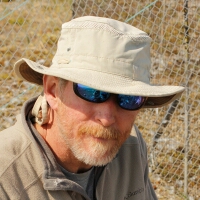
|
Scott
McWilliams
is a nutritional and physiological ecologist whose interests center on
wild vertebrates, with an emphasis on species of conservation
interest. He uses an integrative approach that combines work
on
metabolic physiology, membrane transport of nutrients, digestive
physiology, nutritional requirements, feeding behavior, ecological
energetics, and constraints on prey and predator form and
function. The goal is to understand how these traits jointly
affect the animal’s ecology and influence community dynamics.
He
is a Professor at the University of Rhode Island. |
| |
|
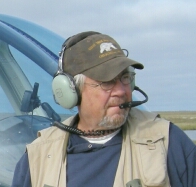
|
Robert Rockwell
is a population
biologist whose interests have centered on
population dynamics, lifetime reproductive success and genetic
structure of arctic geese and ducks. He has
more
recently focused his interests on the effects of climate change on the
interactions of geese with their graminoid forage species
and predators including grizzly and polar
bears. He is also interested in the terrestrial foraging strategies of
polar bears and how these are changing in the face of climate change.
He is a Professor at the City University of New York and the
American Museum of Natural History. |
| |
|
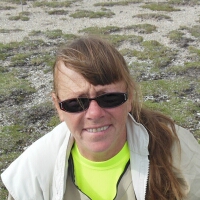 |
Kathleen Schnaars-Uvino
is an ecologist with broad interests in both birds and
plants.
She is interested in the recovery of habitat, severely degraded by
destructive snow goose foraging and oversees our recovery ecology
program. She is also interested in the declines in avian
insectivores and their population trends, behavior and niche
requirements, at and beyond the historic range. She is currently
examining this by providing and monitoring artificial nest boxes to
tree swallows north of tree line. She has involved the Churchill
community in the work as citizen scientists. She is an
Assistant
Professor at the University of Jamestown. |
Collaborators
of the Hudson Bay Project
Amber
Alliger, Department of Psychology, Hunter College of CUNY, New York, NY
Lise Aubry,
Department
of Fish, Wildlife and Conservation Biology, Colorado State University,
Fort Collins, Colorado 80523 USA.
Evan
Cooch, Department of Natural Resources, Fernow Hall,
Cornell University, Ithaca, New York 14853 USA
Mike
DiBrizzi, 1010 Cactus Drive, Havre, Montana, 59501
Markus
Dyck, Department of Environment, Government of
Nunavut, Igloolik, NU X0A 0L0 Canada
Kate
Edwards, Natural Resources Canada, Canadian
Forest Service, Corner Brook, Newfoundland A2H 6J3 Canada
Milton
Freeman, Canadian Circumpolar Institute,
University of Alberta, Edmonton, Alberta, Canada
Jack
Hughes, Canadian Wildlife Service, Environment Canada,
South Wing, Room 3624, 335 River Road, Ottawa, Ontario ON K1A
0H3 Canada
Jodi Grosbrink,
74 Hendry Street, PO Box 927, Churchill, Manitoba R0B 0E0
Mike
Johnson, North Dakota Game and Fish, 100 North Bismarck
Expressway, Bismarck, North Dakota 58501 USA
Dave Koons,
Department
of Fish, Wildlife and Conservation Biology, Colorado State University, Fort
Collins, Colorado 80523 USA.
Peter
Kotanen, Department of Botany, University of Toronto at
Mississauga, 3359 Mississauga Road North, Mississauga, Ontario,
L5L 1C6, Canada.
Jim
Leafloor, Canadian Wildlife Service, 123 Main Street,
Suite 150, Winnipeg, Manitoba R3C 4W2 Canada
Erica
Nol, Department of Biology,
Trent University,
Peterborough, Ontario K9J7B8 Canada
Anne
Via McCollough, Bird Department, American Museum of
Natural History, Central Park West at 79th St., New York, NY 10024
The
Hudson Bay Project Students and Research Team Members
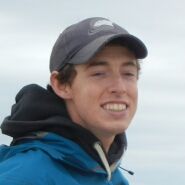 |
Andrew Barnas,
Biology Department, University of North Dakota, Grand Forks, ND 58202.
Andrew is a PhD student at the
University of North Dakota researching applications of unmanned aircraft
systems (UAS) in wildlife ecology. His primary interests are
understanding how wildlife behaviours are impacted
by UAS surveys and estimating snow goose nest density from UAS imagery.
"
. |
| |
|

|
Kim
Bennett, Wildlife
Research and
Development Section, Ontario Ministry of Natural Resources, DNA Bldg.,
Trent University, Peterborough, Ontario K9J 7B8 Canada. Kim is a
wildlife research technician with over 7
years of field experience working in the Hudson Bay Lowlands.
She has been involved with studies that include population
monitoring and nesting ecology of Canada and lesser snow goose
populations. |
|
|
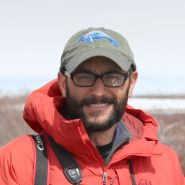
|
Stephen Brenner,
Department of Natural Resources Science, University of Rhode Island,
Kinston, RI. Stephen recently completed his Masters degree at URI
and has begun a new project on the Cape Churchill Peninsula examining
the relation of size, condidtion and reproductive success of savannah
sparrows and yellow warblers to habitat quality.
|
|
|

|
Tom Dolman,
Departments of Wildlife Biology and Conservation Law Enforcement, Unity
College, Unity ME. Tom worked on all our research programs this
summer from monitoring snow geese and common eiders, through a new
study on carnivorus plants to rapid assesment of habitat quality.
|
|
|
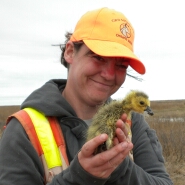 |
Sarah Hagey,
Wildlife Research and Development Section, Ontario Ministry of
Natural Resources and Forestry, Peterborough, Ontario. She is
a
wildlife research technician and has been working in the Hudson Bay
Lowlands for 15 years. Sarah has been heavily involved with
nesting ecology studies and banding of Canada Geese and Snow Geese as
well as many other projects related to plant communities, goose-plant
interactions and habitat assessment and degradation. She is
considered the “go-to” person for most everything related to the field
program. |
| |
|
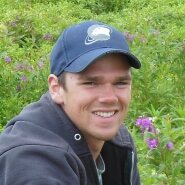 |
Sam
Hervey,
Biology Department, University of North Dakota, Grand Forks, ND 58202.
Sam is an undergraduate student whose interests include the
use
of UAV's
in monitoring nesting snow geese and eider ducks, the use of
molecular techniques to evaluate the local
abundance and relatedness of polar bears and the use of molecular
techniques to estimate the levels of nest parasitism and extra pair
bond copulation in snow geese and eider ducks. |
| |
|
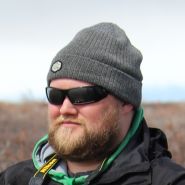
|
Justin Leegard, Biology
Department, University of North Dakota, Grand Forks, ND. While Justin
worked on all the research programs this summer, he oversaw the common
eider work and managed the bulk of our nest cameras. He was also
involved in our rapid assessment of habitat quality project. |
|
|
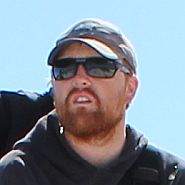
|
Tanner Stechmann,
Biology Department, University of North Dakota, Grand Forks.
Tanner is a graduate student whose interests include the use of
miniature surveillance cameras to study nesting behaviors of common
eiders and the use of isotopes to investigate potential diet shifts
that may contribute to changes in breeding behaviors and reproductive
success. |
|
|
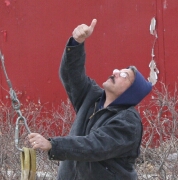
|
Frank
Uvino, Broad Channel, NY. Frank, using the
helicopter to move lumber, is the facilities manager at the La
Pérouse Bay Research Station. He has overseen construction of
our three new buildings and has made sure they have lights, heat and
running water. He is working towards making the facility more
ecologically friendly. He makes the finest meat
balls on earth. |
| |
|
| |
|
revised 8/28/18










